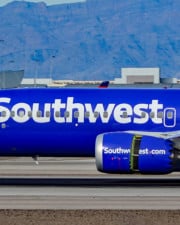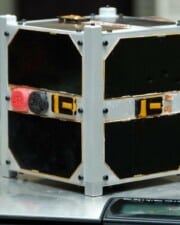It’s a common sight to see planes flying high in the sky, but why do they need to go so high? Flying lower to the ground seems to make more sense because then cabins don’t need to be pressurized, and passengers get to enjoy views of the ground.
Planes have to fly so high because at high altitudes, they are more efficient due to the lower resistance in the lower stratosphere. That allows the plane to use less jet fuel, fly faster, and tax the engines less.
But there is more to it! Here is everything you need to know about the altitude of planes.
How High Do Planes Fly?
The answer depends on the type of plane you are talking about. Most commercial passenger airplanes reach a cruising altitude between 33,000 and 42,000 feet, usually around 35,000 or 36,000 feet off the ground. That is more than six miles off the ground!
Planes spend most of their time at this altitude. It only takes powerful commercial airliners about 10 minutes to climb to this altitude after taking off. Landing is a more delicate operation and pilots will start lowering their altitude sometimes 30–45 minutes before actually beginning the descent. However, most of the flight happens several miles above the surface.
The answer is different for smaller planes. Personal aircraft and helicopters usually fly at a height of 10,000–15,000 feet above the ground. That’s because these planes don’t have the capabilities to fly at high altitudes. They do not have pressurized cabins to prevent oxygen loss or powerful engines to power on.
Why Does a Higher Altitude Mean a More Efficient Flight?
The main reason why airplanes spend most of their flight at cruising altitude is to increase the efficiency of the machine. At an altitude above 30,000 feet, the air is much thinner than it is on the ground. Thinner air means that there is less resistance on the fuselage and engines of the plane.
Less resistance means that engines have to work less to propel the plane forward, which in turn burns less fuel. Obviously, this saves the airline money, but it also benefits the passengers. Since airplanes don’t have to carry as much fuel when flying at high altitudes, there are fewer situations where a plane has to stop and refuel before getting to its destination.
Other atmospheric conditions aid the efficiency of the airplane engine, not just the lower air pressure. The temperature is much colder at that height, several dozen degrees below freezing. Colder temperatures help engines work more efficiently and prevents them from overheating.
Does Flying So High Help Planes Avoid Obstacles?
There are other reasons why airplanes fly at cruising altitudes. One crucial reason is to avoid common obstacles that could affect how an airplane flies.
It seems as if the air should be free of obstacles (This isn’t the road, where there are plenty of cars and people in your way.), but you’d be surprised. One rare but frequently dangerous obstacle planes run into is birds. Luckily, birds don’t fly at cruising altitudes, so pilots only have to worry about them when taking off or landing.
A more common obstacle in the air is the weather. Storms form in the air, and flying through these clouds will cause turbulence, which could damage the aircraft in addition to terrifying passengers. Flying at cruising altitudes helps pilots avoid most clouds, which typically form at much lower altitudes.
Finally, the airlines want to avoid any possibility that planes will crash into objects on the ground. Although 35,000 feet seems very high up, don’t forget that some mountains reach too close for comfort (Many mountains in the Himalayas are over 24,000 feet tall.). Pilots want to have enough space to maneuver the plane in case of an emergency without worrying about crashing into objects on the ground because their altitude is too low.
Why Don’t Planes Fly Any Higher?
If flying higher in the atmosphere has many benefits for planes, from increasing efficiency to avoiding obstacles, then why don’t planes fly even higher?
Today, 42,000 feet is kind of the upper boundary of the aviation cruising sweet spot. Climbing higher than that would require a lot of power, which would counteract any extra efficiency. Most commercial airliners are too heavy to fly any higher anyway.
Flying too high could also cause many safety issues. Planes are designed for a certain altitude, and going any higher could endanger passenger lives. For example, if cabin pressure drops, which is more common the higher a plane goes, pilots have only a few minutes to safely lower the plane to an altitude of 10,000 feet, which gets harder and harder the higher the plane climbs.
The range of altitudes planes have for cruising now is designed for maximum efficiency and safety.
Related Posts













